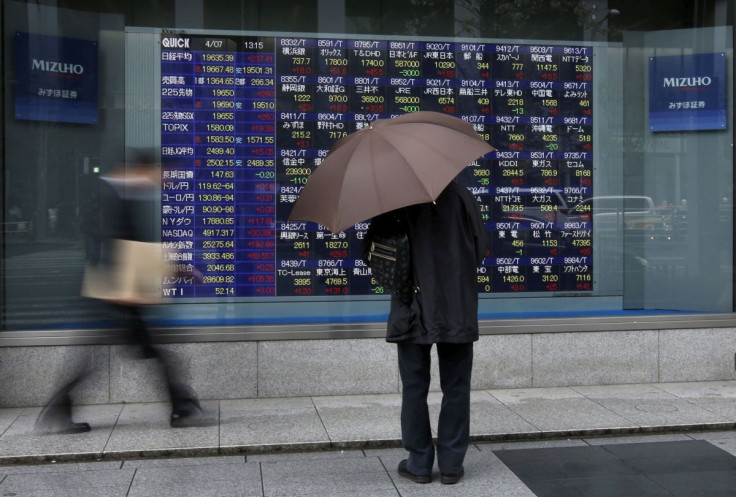Wall Street Slides, 10-year Treasury Yields Cross 3% As Fed Rate Hike Looms

U.S. stocks turned lower on Monday and benchmark U.S. Treasury yields breached the 3% mark at the start of an eventful week of corporate earnings, economic data and an expected interest rate hike from the U.S. Federal Reserve.
All three major U.S. stock indexes reversed earlier gains as 10-year Treasury yield reached the 3% mark for the first time in more than three years.
Wall Street's sell-off extended the S&P 500's fourth straight weekly decline, which capped its worst January-April percentage drop since 1932, as market participants girded for an expected 50-basis-point interest rate rise at the conclusion of the Fed's two-day monetary policy meeting on Wednesday.
"Treasury yields are currently reflecting an aggressive Fed tightening mode," said Oliver Pursche, senior vice president at Wealthspire Advisors in New York. "The question on investors' minds is how flexible and willing to take their foot off the pedal will the Federal Reserve be?"
Pursche said that while an eventual recession "is inevitable because it's part of the normal economic cycle," he added that "it's extremely likely that slowdown will be influenced if not outright caused by Fed action."
A report from the Institute for Supply Management showed U.S. factory activity losing steam, its purchasing managers' index (PMI) coming in well below consensus.
This followed a PMI report from China showing factory activity contracting for the second straight month as widespread COVID-19 shutdowns disrupted production and supply chains.
The Dow Jones Industrial Average fell 440.24 points, or 1.33%, to 32,536.97, the S&P 500 lost 58.15 points, or 1.41%, to 4,073.78 and the Nasdaq Composite dropped 100.36 points, or 0.81%, to 12,234.28.
The glum China factory data dragged European stocks to a sharply lower close, although the STOXX 600 pared its losses following a sudden 3% plunge earlier in the session - what some brokers called a "flash crash" caused by an erroneous trade.
The pan-European STOXX 600 index lost 1.46% and MSCI's gauge of stocks across the globe shed 1.34%.
Emerging market stocks lost 0.67%. MSCI's broadest index of Asia-Pacific shares outside Japan closed 0.62% lower, while Japan's Nikkei lost 0.11%.
Long-dated U.S. Treasury yields hit multi-year highs, with the benchmark 10-year yield crossing the 3% barrier for the first time since December 2018.
Benchmark 10-year notes last fell 27/32 in price to yield 2.9905%, from 2.885% late on Friday.
The 30-year bond last fell 62/32 in price to yield 3.0559%, from 2.946% late on Friday.
Crude prices turned around mid-session, as worries over weak demand due to bleak factory data from China were overshadowed by a potential European ban on Russian oil that stoked fears of tightening supply. [O/R]
U.S. crude settled at %105.17 per barrel for a 0.46% gain on the day, while Brent gained 0.41% to settle at $107.58 per barrel.
The dollar hovered around a 20-year high against a basket of currencies ahead of the Fed's expected rate hike as investors focused on the possibility that the FOMC could adopt an even more hawkish stance than expected.
The dollar index rose 0.71%, with the euro down 0.44% to $1.0495.
The Japanese yen weakened 0.22% to 130.14 per dollar, while Sterling was last trading at $1.2474, down 0.77% on the day.
Gold prices plunged to near 3-month lows as the prospect of faster-than-anticipated interest rate hikes from the Fed lifted Treasury yields and the greenback.
Spot gold dropped 1.8% to $1,862.31 an ounce.
© Copyright Thomson Reuters 2024. All rights reserved.







